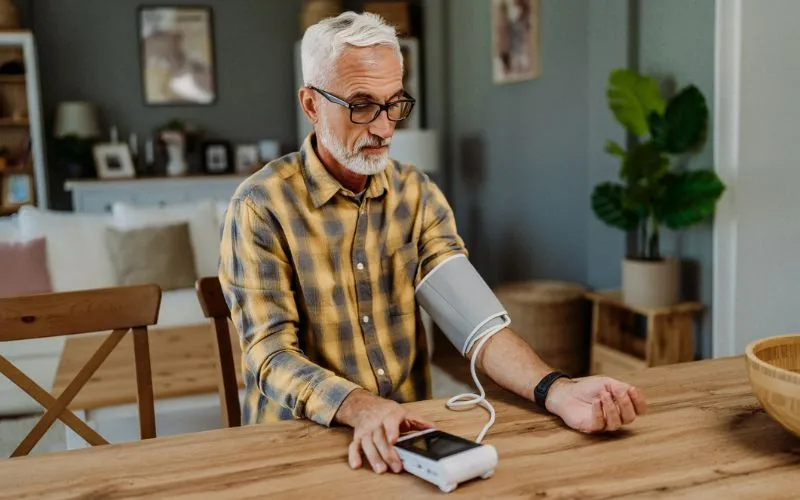Protecting Your Child’s Eye Health
Dean McGee Eye Institute’s newest pediatric ophthalmologist, Dr. Maria Lim, recommends monitoring your child’s vision and practicing healthy eye care.
“Parents have an opportunity to help their child understand the importance protecting their eyes with safety glasses when participating in certain sports and activities,” Dr. Lim says. “Maintaining good overall health with a balanced diet and exercise helps in the long term.”
If you notice a problem in vision, speak up
Signs of Vision Problem in Infants and Toddlers
In infants and toddlers, eyes might be crossed or turned out. In either case, make an appointment with a pediatric ophthalmologist to see if your child has a condition called amblyopia (or lazy eye). It can be treated with eye drops or temporarily wearing an eye patch. Without treatment, permanent vision loss occurs. Also, take note of any unusual clouding or discoloration in your child’s pupils, discharge, or redness.
Signs of Vision Problems in Children and Teens
Does your child strain to look at the screen during movies or have a hard time reading the blackboard in class? When they read, do they put the book abnormally far away or close to their face? This might indicate near- or farsightedness. Older children may tell you they can’t see far away or near–or they may strain and rub their eyes often. Don’t wait for a vision exam at school–if you notice a potential problem, it’s time to make an appointment with your eye doctor.
Regardless of age, accidents can happen. In case of an eye accident, be ready to act quickly. If your child complains of intense eye pain or you notice an abnormal discoloration or abrasion on the eyes, immediately take your child to the ER.

When to test your child’s vision
Most public schools test their students through yearly vision tests. These aren’t comprehensive eye exams, but they can indicate potential vision problems like near- or far-sightedness. If your child comes home with less than stellar results, it’s time to visit the eye doctor. A pair of corrective lenses or contacts can make a world of difference.
The American Association for Pediatric Ophthalmology and Strabismus, or AAPOS, lists out its recommendations of how often and when it’s appropriate for your child to have a vision screening.
Protect your child’s sight from outdoor and sports risks
Sports and increased outdoor time are almost a given for older children. Make sure you educate your child about protecting their eyes on the court or field.
If there’s required or recommended protective equipment in the sport your child plays, encourage them to wear it. If you play sports, lead by example and always wear protective gear.
It’s never a bad idea to send along a pair of sunglasses if your child plans to spend an extended amount of time in the sun–even in the winter! Check out a few safe sunglass options next time you’re at the optical shop, or ask a pediatric ophthalmologist about safe store-bought options.
Keep eyes away from potentially harmful toys
If a toy launches a projectile, it’s a risk. Make sure your child is playing with age appropriate toys and plays safely with others. Teach small children not to throw hard objects at another person’s eyes or poke another child in the face.
If you allow a child to play with an age-appropriate toy launcher like a BB gun, or even a sling shot, provide adult supervision in a safe area away from others and require them to follow all safety rules.
Read additional resources about toy and eye safety and follow DMEI on Facebook in December as we observe Safe Toys and Celebrations Month.
Talk to teens about eye hygiene
Many teens ask to switch out their glasses for contacts. If your teen is ready, make an appointment with your eye doctor. An ophthalmologist or optometrist can determine if contacts are a good option for your teen and provide them with instructions about contact care. When your teen first starts wearing contacts, be helpful and remind them about proper care. Educate yourself and your teen about the dangers of poor contact hygiene.
If your teen wears eye makeup, talk to them about regularly cleaning it off each night and using clean tools. While corrective contact lenses are safe for use, cosmetic contacts don’t require a prescription, can be purchased online, and are potentially dangerous. Advise your teen not to purchase or wear cosmetic contacts.

DMEI provides pediatric eye care
Dr. Lim is one of the institute’s newest physicians and brings exceptional care and expertise to DMEI’s littlest patients. Her passion makes her a strong addition to the pediatric team.
“My first ophthalmology rotation as a medical student was with a pediatric ophthalmologist and I really enjoyed seeing children in the clinic,” Dr. Lim says. “I have an opportunity to play with children every day, build relationships with my patients and their families that continue for years, and treat conditions that can be managed medically and surgically.”
“I chose to practice at the DMEI because of their dedication to providing good patient care in addition to the ‘family feel’ of the department.”
If your child needs an eye exam or expert eye care, we can help. Request an appointment with one of our pediatric physicians today.



